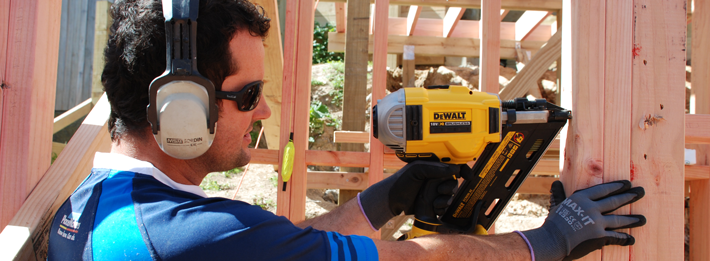Building a safe workplace
22 Jan 2016, Building and housing, Featured, Prove Your Know How, Safety

Summer is always a busy period for builders, which is great for those employed in the industry. However, it’s important to not overlook safety measures as work increases and recognise that employees have the right to certain conditions
Employers must take ‘all practicable steps’ to ensure you and your fellow employees’ safety.
Employee health and safety rights on a work site
- Work in a safe environment – employers must manage workplace hazards/risks and make sure employees know how to keep themselves safe. Hazards or risks are things that might cause harm to employees or their health.
- Access to information – employers must provide information about workplace health and safety in a way employees can understand.
- Training – training should occur before the work commences. Employees should be encouraged
to ask for more training if they feel they need it. This includes the use of tools or equipment on site. Any standard operating procedures should be clearly explained and understood. - Work with safe machinery, vehicles, tools and equipment – all workplace tools, equipment, vehicles and machinery must be safe to use and in good working condition. All staff should check any equipment before use and ensure that those nearby are safe.
- The basic necessities – toilets, hand-washing facilities, clean drinking water, first aid facilities and a place to have a meal break in reasonable comfort and shelter, must be available.
- Workplace hazards/risks maintained – potential hazards/risks should be identified at least once every week, with all practical steps taken to eliminate or minimise these risks. A good chance to raise these is at toolbox talks or the pre-start meeting.
- Correct Personal Protective Gear (PPE) – employers must provide correct PPE for the work undertaken: gloves, safety boots, hard hats, ear muffs, glasses, breathing protection etc.
- Emergency procedures knowledge – employers must inform employees what to do in an emergency, such as a fire, earthquake or flood.
Accident prevention
Employees may refuse work that is likely to cause them serious harm and must take reasonable care to keep themselves safe, as well as avoid causing harm to other people. Employees have the right to be involved in improving health and safety on the worksite.
Had an accident?
Accidents onsite must be recorded in the site register. Serious injuries at work must also be reported to WorkSafe New Zealand.
Knowing your rights for a safe working environment is important. If you see something that is not right, say something. Discussing and making sure correct safety is conducted on site makes a happier, healthier working environment for everyone.
To find out more about Site Safe and health and safety, contact us on 0800 SITE SAFE or check out our Site Specific Safety Plan page on our website at www.sitesafe.org.nz/SSSP.
Entitlement claims by industry (2014)
According to Statistics New Zealand, a total of 226,100 claims were made to ACC for work-related injuries in 2014.
Of those, the construction industry (32,400) made the second-highest number of claims behind manufacturing. The construction industry also recorded the third-highest incidence rate of claims, with 172 claims per 1,000 full-time employees (FTEs). A total of 28,100 entitlement claims, which reflect more serious injuries, were made. The construction industry (4,400) made the second most claims and was again the third-highest by incidence rate, with 23 claims per 1,000 FTEs.
About Site Safe
Site Safe is a national not-for-profit membership organisation that promotes, supports and inspires a culture of health and safety in the NZ construction industry.
Register to earn LBP Points Sign in




